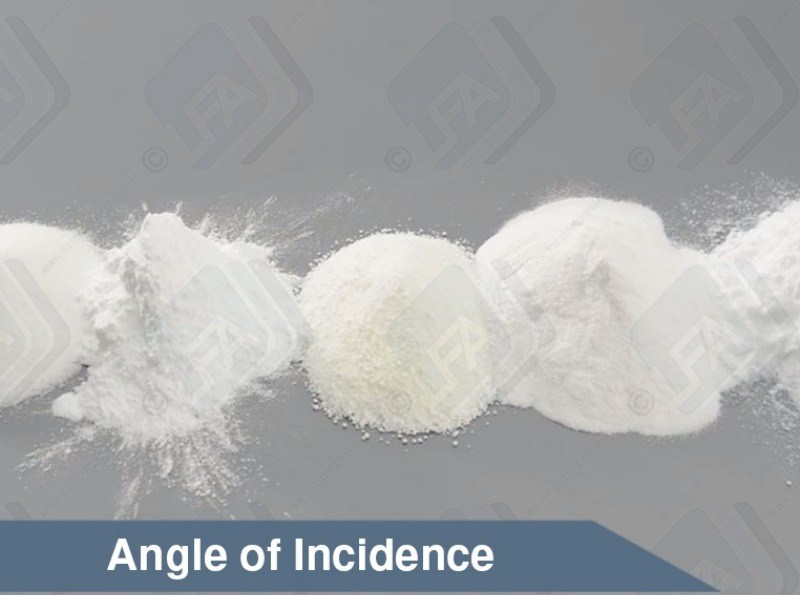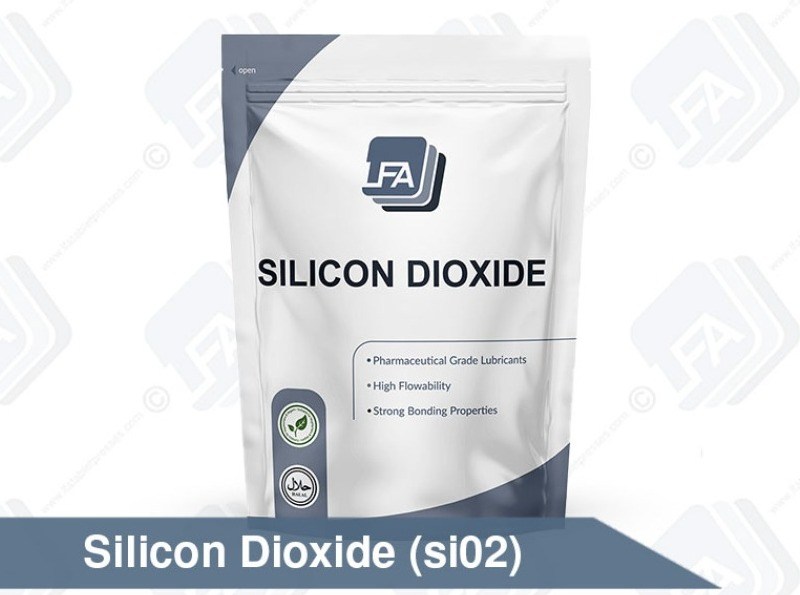二氧化硅也称硅石,是一种赋形剂。它具有多种功能,让压片过程更加简单。二氧化硅是一种惰性物质。也就是说,它不能和粉料中的其他原料发生化学反应。这让片剂的生产和在人体中的消化都变得更加容易。二氧化硅熔点很高,沸点也较高,不溶于水。二氧化硅有天然二氧化硅和合成二氧化硅,两者的化学成分一样。它能提高粉料的流动性,防止粉料凝结在部件上,是一种常用的添加剂。
二氧化硅吸收周围的水分,所以化妆品和食品生产商经常使用它。制药公司也需要这种功能。二氧化硅拥有的不同特性让生产过程更加轻松、流畅。
二氧化硅具有良好的液体吸收能力,每100g硅吸收300g的液体。加入二氧化硅以后,潮湿材料也能变成自由流动的粉料。它是一种助流剂,一种提高配方流动性的物质。它确保粉料顺利通过机器,不会粘到设备上。二氧化硅还能提高活性药物成分(API)的稳定性。API是一种活性药物成分,对水分十分敏感。这种能力减少微量残余水分,降低机器退化的风险。二氧化硅有独特的吸收水分的能力,使快速压片成为可能。快速压片对粉料有严格要求,过干则裂片,过湿则粘连。
地球上的二氧化硅资源丰富,这种元素很有意思,广泛存在于土壤中,占地壳的60%,占硅酸盐矿物岩石的93%。二氧化硅是石英的主要组成部分,也存在于人体组织、植物以及我们的食品中。硅是保证人体骨骼、皮肤、头发、牙齿和指甲健康的必需物质。人体缺乏二氧化硅,可能会导致骨骼生成障碍、皮肤不健康、牙齿不健康。
二氧化硅需要正确处理。它可以延长产品储存时间,保护人的安全。如果不慎接触,二氧化硅会刺激皮肤和眼睛。还应避免吸入二氧化硅,接触它时佩戴口罩。如果二氧化硅得到正确储存和保管,将一直保持良好状态,直到被用于其他产品中。
二氧化硅是一种多功能的广受欢迎的赋形剂。生产时使用二氧化硅效果显著,极大提高生产效率。
| 项目 | 数值 |
|---|---|
| CAS登录号 | 7631-86-9 |
| 分子式 | 60.08 g/mol |
| 外观 | 白色粉末 |
| 物理形态 | 固体 |
| 储存条件 | 室温储存 |
| 熔点 | 1,713°C |
| 密度 | 2.648g/cm3(α-石英) 2.196g/cm3(非晶质) |
| 分子量 | 60.08 g/mol |
| 文件 | 不耐受数据 技术参数 |
Yes, it does not matter what age, size or sex the person consuming the products is. It is, however, important to check the intolerance data.
Yes, all of the excipients are safe for human or animal consumption. There are some precautions that should be taken when handling them and there are some people that might have intolerances to some of them. Information on this can be found in the products MSDS and Intolerance Data Sheet. This can be found in this section for every excipient.
Yes, there are all of them can be found in the intolerance sheets for each product. The intolerance sheets can be found here: https://www.lfatabletpresses.com/product-data
FFFFFF Yes, we have bulk pricing for all of our excipients, and these can be found in this section. We offer bulk in 500 kg, 1 ton, 2 ton and 5 ton lots. The prices are set on these quantities as these are the amounts that will fit on pallets.
Yes. CoA stands for Certificate of Analysis this is also known some times as an MSDS (Material Safety Data Sheet) all of the information contained in a CoA is inside the MSDS for every LFA product which is emailed to you after purchase.
Yes. There are two things at play here. You can get hygroscopic and hydrophobic excipients. Hygroscopic means that they take on water quickly, while hydrophobic means that they repel water.
There are products know as supper disintegrants. These products help the breakdown of tablets. At the moment LFA does not sell any supper disintegrants.
Magnesium stearate is hydrophobic this means that it will slow the breakdown of a tablet.
However, it is used in such small amounts that most of the time it will not make a difference to our customer's products. If they would like to be sure then they should conduct what is known as a disintegration test.
Firmapress - 2 years form batch date.
Dextrose - 3 years from batch date.
Dicalcium Phosphate - 3 years from batch date.
Microcrystalline Cellulose -
Magnesium stearate -
Lactose - 2 years from batch date.
Silica Dioxide - 2 years from batch date.
here are 6 steps that should be followed as a general rule of thumb when cleaning contact surfaces that have come into contact with powders:
Dry Clean - First you need to remove as much of the dry powder as possible. You can do this using a hover/vacuum. Make sure that the vacuum you are using has a filter good enough to handle fine dust.
Wet Clean - Next you need to perform a wet clean. This can be done with warm water and soap or if available an ultrasonic cleaner.
Rinse - Next you need to rinse off any soap with potable water (drinking water). You do not have to do this if you used an ultrasonic cleaner in the last step. It is important to ensure that all parts are thoroughly dried immediately after washing to avoid any rusting.
Sanitise - Next you need to sanitise the surface. This step is recommended by the FDA. There are a number of sanitising solutions available designed to be applied and left on.
Lubricate - You now need to lubricate any parts that require it. This should be with the appropriate grade oil or grease considering your use and greasing chart. Store - Finally store any of the parts in a cool dry place. If you are storing them on the machine then make sure the machine is in a temperature controlled environment with low humidity.
Dextrose - approx 100 mesh
Dicalcium Phosphate - approx 100 mesh
Microcrystoline Cellulose - approx 120-200
Magnesium sterate -
Lactose - 80 mesh
Silica Dioxide -
Firmapress - 100-200 mesh
Dextrose - Sweetener, binding agent, good for chewable tablets or candy.
Microcrystalline Cellulose - Binder, filling agent. Good at binding tablets and making them bigger. It can also be used as a filler for capsules.
Magnesium stearate - Dry Lubricant. This stops products from getting stuck to the tooling. It can also help with powder flow issues and caking issues.
Lactose - Binder, sweetener and bulking agent. It has a large mesh so it flows well but most people do not like it because of the intolerance issues.
Silica Dioxide - Flowing agent. This assist powders in flowing smoothly through the machines. It also helps with cacking issues where powders get stuck to the machine.
Firmapress - 2 years form batch date.
Dextrose - 3 years from batch date.
Dicalcium Phosphate - 3 years from batch date.
Microcrystalline Cellulose -
Magnesium stearate -
Lactose - 2 years from batch date.
Silica Dioxide - 2 years from batch date.
If your product does not bind well then we would recommend using MCC. This can be used in any % the limiting factor is the size of the tablet.
If the amount of MCC you would have to use would be too much or if you do not want to use MCC then you have 3 other options: Ask your supplier for a directly compressible or tabletable grade of your product. Spray dry your product. Wet granulate your product.
If your product is sticky then you will need to add a dry lubricant to your mix. For this, we recommend magnesium stearate.
We do not recommend that you add more than 1% to the mix as more than this can cause capping. If your product is still sticky at this point then we would recommend looking into granulation.
If your product or API is clumpy then you will need to add an anticaking agent. For this, we recommend silicon dioxide. We only recommend adding a maximum of 2% of this to the mix








